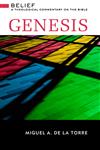 Chapters 26 and 27 of the book of Job provide a sort of pivot in the text. In his responses to his friends, Job’s sense of God’s ineffability seems to expand, while his sense of his ability to demand answers from God seems to shrink. Job continues to maintain his righteousness, to be sure, and in Chapter 27, he even seems to echo the retribution theology of his friends.[1] But in Chapter 26, Job confronts his friends with the vastness of God’s creation:
Chapters 26 and 27 of the book of Job provide a sort of pivot in the text. In his responses to his friends, Job’s sense of God’s ineffability seems to expand, while his sense of his ability to demand answers from God seems to shrink. Job continues to maintain his righteousness, to be sure, and in Chapter 27, he even seems to echo the retribution theology of his friends.[1] But in Chapter 26, Job confronts his friends with the vastness of God’s creation:
He stretches out the north over empty space
And hangs the earth on nothing.
He wraps up the waters in His clouds,
And the cloud does not burst under them.
He obscures the face of the full moon
And spreads His cloud over it.
He has inscribed a circle on the surface of
the waters
At the boundary of light and darkness. (Job 26:7-10 NASB)
Even these wonders, however, only hint at God’s greatness: “Behold,” Job says,
these are the fringes of His ways;
And how faint a word we hear of Him!
But His mighty thunder, who can
understand? (Job 26:14)
The picture above is of Messier 82, a galaxy in Ursa Major. I’ve observed it through my big telescope in a dark sky, and it appears much like the picture — a long, thin, fuzzy patch of light. M82 is a “starburst” galaxy, meaning it contains regions that produce new stars. In fact, M82 contains 197 different star-forming regions, each of which is as massive as 200,000 of our Suns. At the center of this galaxy, there is a black hole that is as massive as 30 million of our Suns. It also contains an object that seems to move at four times the speed of light and that sends out radio waves unlike anything else ever discovered in the universe, which scientists remain unable to identify.
So that fuzzy patch of light in the telescope is a galaxy of billions of stars, that is actively spewing out millions of new stars, with a gaping black hole at its center and a warp-speed unidentified object traversing its bounds. And all of that is just a small part of “the fringes of His ways.” I look at the Hubble photograph or through my telescope and it is as though I’m the sick, bleeding woman who reached out to touch the fringe of Jesus’ robe in the hope she would be healed (see Matthew 9:20).
The “fringe” in Matthew 9 refers to tassels that Jewish men wore to remind them of the Torah. The word used in Job 26:14 is ketzot, which refers to the edge or far end of a thing. The “tassels” in Numbers 15:38 are tzitzit, an unrelated term, so there is no direct linguistic parallel. Still, I like the parallel concept of the “fringe” or “far end” as a reminder of God’s distance. It is an infinite distance that God nevertheless allows us to glimpse and touch, if only at the fringe, through His creation, His Law, and His incarnation in Christ. Just that glimpse and touch are enough to settle the mind and stop the bleeding, even if — or maybe because — we know that what is glimpsed and touched is just a distant, unformed edge that recedes towards a horizon beyond comprehending.
____________
[1] The text of these chapters is difficult to reconstruct, and some scholars think portions of these speeches in fact belong to Job’s friends and not to Job. But in canonical context, these chapters are assigned to Job, and we can read as though Job is the speaker as a form of theological hermeneutic.
 Here’s a clip from liberation theologian
Here’s a clip from liberation theologian  I’m auditing a patristics class at
I’m auditing a patristics class at  This is the cover image from last week’s Economist magazine. The cover article
This is the cover image from last week’s Economist magazine. The cover article